Pipe Expansion Joint Product Testing
U.S. Bellows, Inc. does extensive physical testing ranging from X-Ray tests and Hydrotests to Helium Leak tests (using a mass spectrometer.) Each bellows and pipe expansion joint unit goes through in-process quality control using a system of travelers. Final in-house inspection and testing are performed prior to shipping. Our manufacturing shop also has ASME Section VIII CODE certification.
Fatigue Testing (also known as Cycle Testing)
Fatigue testing is essentially verifying how many cycles a bellows can withstand before failing. The bellows is placed on the “cycle-test machine” and bolted to a hydraulic plunger. Each cycle is counted as the bellows is compressed and returned to neutral.
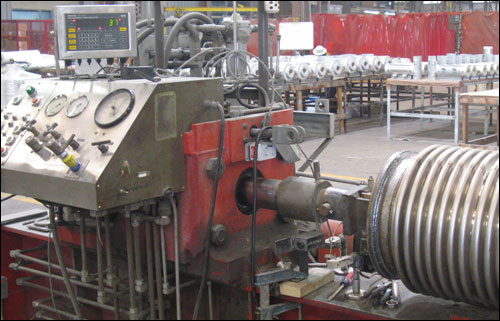
View a Fatigue Test Verifying a Cycle Life of 30,000 (VIDEO)
Burst Testing
The objective of the burst test is to determine the ultimate pressure resistance, primarily conducted on bellows. Normally, hydraulic pressure is slowly increased until failure occurs. Pressure balanced pipe expansion joints are designed to maintain a constant volume through the use of a compensating bellows.
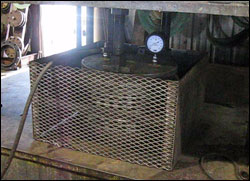
Dye Penetration Testing
Liquid dye and a white powder observant are used to locate leaks or cracks in the bellows attachment welds. This test is performed for long seam welds before and after forming the bellows.
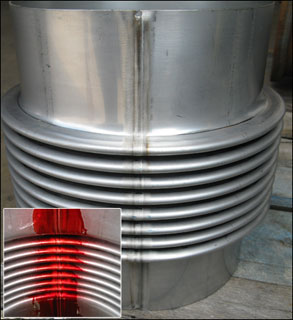
Hydrostatic Testing (also known as Hydro-testing)
During a hydro-test, the bellows is completely filled with liquid until a desired pressure is reached. The bellows is pressurized for 30 minutes to locate leaks or cracks in the welding.
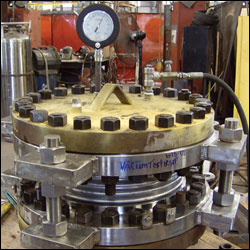
Helium Leak Testing
The bellows is filled with pressurized helium and then “sniffed” to detect leaks indicated by a mass spectrometer.
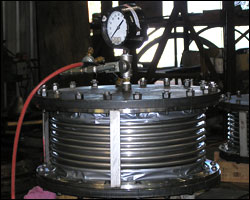
Additional Product Testing:
- Ultrasonic Testing
- Radiography Testing
- PMI Testing
- Pneumatic Testing
- Magnet Particle Testing

